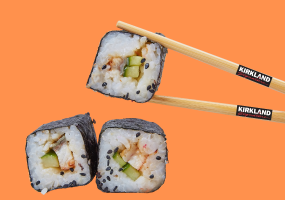Cardamom is a spice made from the seed pods of a tropical plant related to ginger and is one of the world's most expensive spices. It is local to India and Sri Lanka but is now also harvested in Cambodia, Guatemala, Indonesia, Mexico, and Vietnam.
There are two main types of cardamom; the black cardamom and the green cardamom.
Green Cardamom - Green cardamom or Elettaria cardamom is the most common variety sold in the market. It can be used for sweet and savory dishes. It is native to the southwestern Indian state of Kerala known as the western ghats and is referred to as the "Queen of Spices". The green cardamom pairs very well with saffron, nutmeg, and black pepper and can even be added to lemonade to give it an interesting and sweet taste.
Black Cardamom - Black cardamom or Amomum subulatum has larger pods and has a smoky element that is more suited for savory recipes. Black Cardamom can't be used as a substitute for Green as its flavor is much earthier and smokier. In Indian recipes, it is used to add a bacon flavor to vegetarian dishes.
Other types of cardamom are the following:
White Cardamom - White Cardamom is just a bleached version of green cardamom. The smell and taste of it are lesser than the green variety.
Cardamom Seeds - Cardamom Seeds are collected inside the husk of a green cardamom pod. The taste of the seeds is warm with a hint of mintiness.
Chinese Cardamom - Chinese Cardamom or Amomum globosum is almost the same as the Black Cardamom but is less smokey and has a more medicinal flavor profile. Chinese brown cardamom pods go well with spices like cloves, star anise, pepper, and chili.
The Unique Flavor of Cardamom
Green cardamom is herbal with notes of pine with just a hint of sweetness. Black cardamom tastes like smoked mint, almost menthol-like flavor. It is more severe both in smell and taste compared to the green variety.
You can buy powdered green cardamom in the supermarket but more cooks prefer working with pods since you get more flavor from them. Buying and grinding the pods are the best way to harness the spice's full flavor.
Cooking with Cardamom Pods
The pods need to be ground or crushed in order for them to be used in cooking effectively. This can be achieved by using a pestle and mortar. Simply place the cardamom pods in the mortar and pound the pods with the pestle.
When cooking stews or curries, the pod can be added to the cooking pot along with the seeds. After a while, the pod will dissolve and a little extra flavor is added to the dish. When using green cardamom for hot drinks such as coffee or tea, simply grind three to four seeds along with your coffee beans and pour hot water over as usual.
An ounce of Cardamom Pods is approximately 200 pods and each Green Cardamom Pod holds 5-12 seeds. It takes about 10 pods to produce one teaspoon of ground cardamom.
Cardamom is consumed the most in Sweden. There it is used to season everything from baked goods to hamburgers and meatloaves. Cardamom can also be added in drinks like mulled wine, eggnog, and hot cider.
Storing Cardamom Pods
The best way to store cardamom is to keep them in a tightly sealed container and store it in a cool, dark place. The pods will last a year if stored this way and will slowly begin the loose flavor thereafter.
Ground cardamom seeds have a shorter shelf life of only a few months. This is because the pod's essential oils will begin to fade as soon as they are ground. If you want to keep your cardamom longer, then buy them as pods and grind when you need them is advised.
Substitutes of Cardamom
Since the flavor of cardamom is very unique, it's difficult to find a substitute spice for it. However, blending other warm spices like cinnamon, nutmeg, ginger, and cloves can help replace it. Mix an equal parts ground cinnamon and nutmeg. If you don't have nutmeg on hand, try mixing equal parts cinnamon and ginger or equal parts cinnamon and ground cloves.
Health Benefits of Cardamom
Cardamom was traditionally considered as a therapeutic herb in India and was one of those applied in Ayurveda, the ancient Indian science of medicine and lifestyle. It is also used in traditional Chinese medicine and is believed to be a remedy for constipation, colic, diarrhea, dyspepsia, vomiting, headache, hypertension, epilepsy, and cardiovascular diseases, including poor circulation.
Recent research has found out that cardamom might also contain cancer-fighting compounds. The spice may also enhance the ability of natural killer cells to attack tumors. Although the results are promising, the studies have only been conducted on animals. Further studies on humans are needed before stronger claims can be made.
Cardamom is also rich in compounds that fight inflammation and infection. Furthermore, it has been used in dealing with dental problems for centuries. Research has verified the presence of antimicrobial properties in cardamom targeting common bacteria linked to cavities.
The Do's and Don'ts of Cardamom
Do learn the varieties - The green and black cardamom varieties taste very different from one another.
Do the grinding - As mentioned above, the cardamom loses its flavor once it's grounded. Buy a lot of pods then grind just before using them. Cardamom is also one of the three most expensive spices. When you do the grinding yourself, you will save a lot of money.
Don't Use too Much - If you are using cardamom for the first time, a little goes a long way so be careful in adding them to your dish. It will quickly overpower a dish if used too much and will even make it taste bitter.
Don't use stale cardamom - You may find yourself using too much if the spice is not so fresh because using more can seem like a good way to compensate for the loss of flavor. This will only make your dish taste chalky.
* This is a contributed article and this content does not necessarily represent the views of foodworldnews.com









